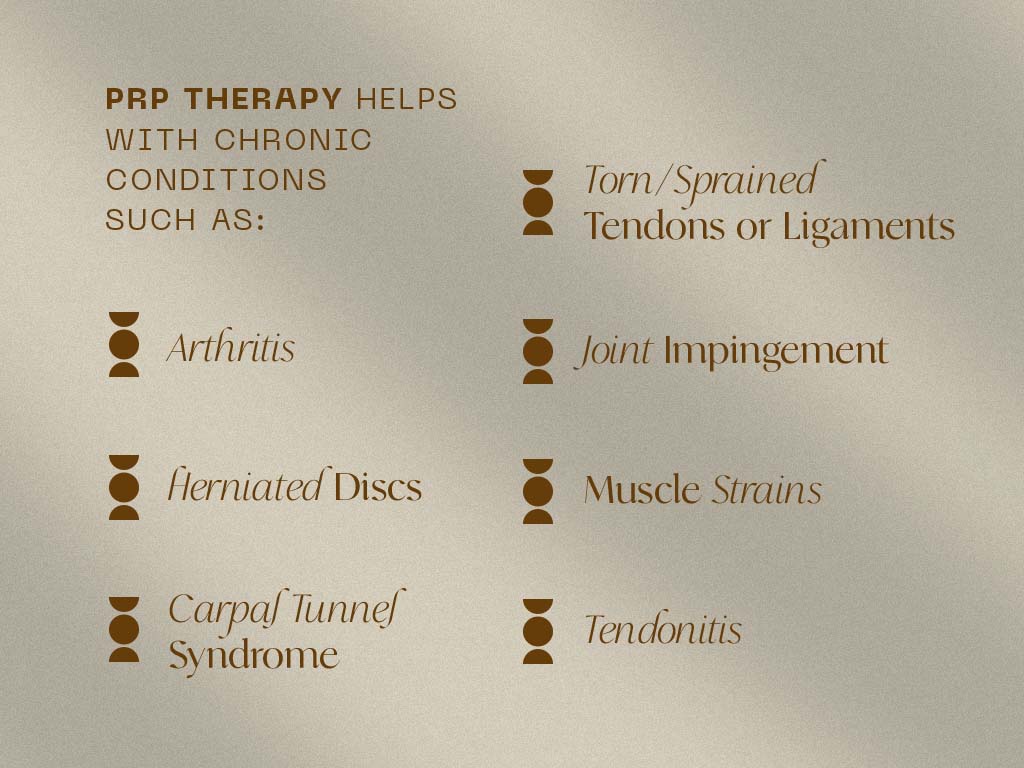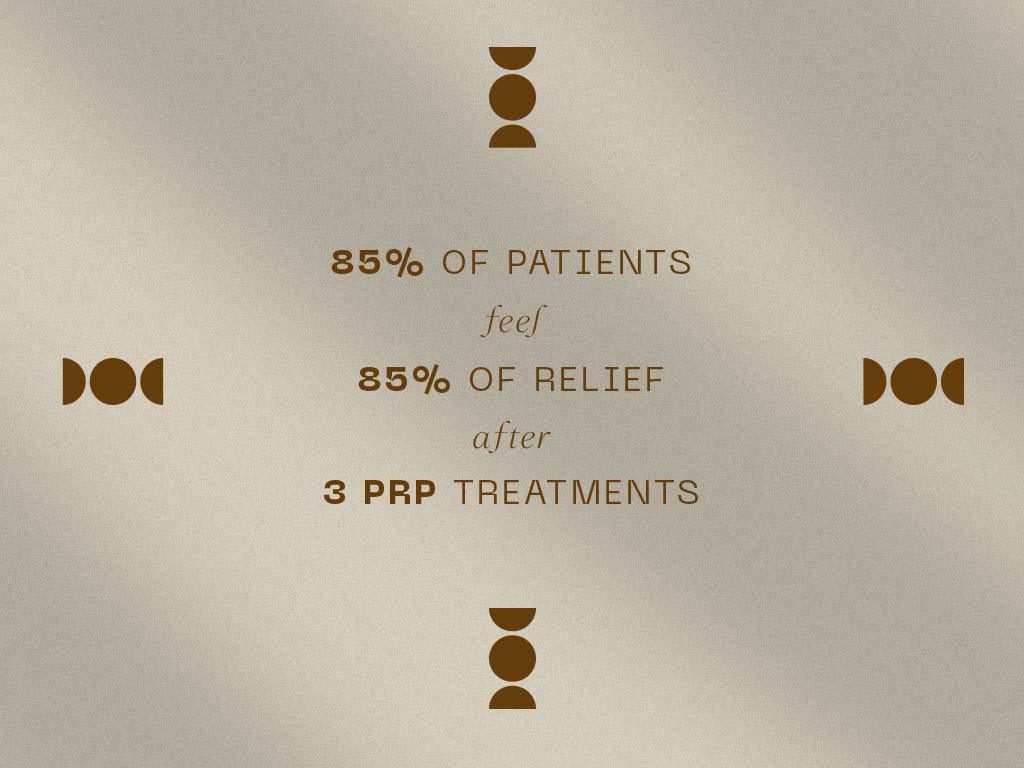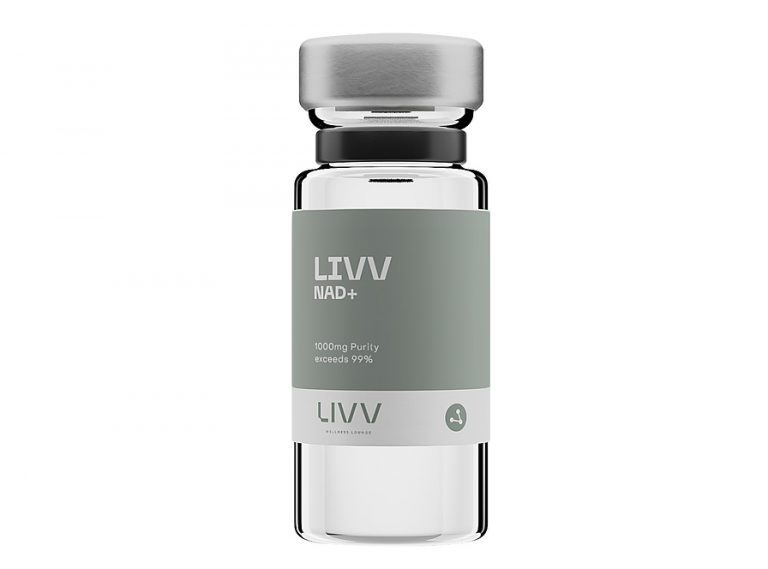What is PRP Joint Injection Therapy?

What is PRP Joint Injection Therapy?
LIVV is proud to offer PRP joint injection therapy, a non-surgical and regenerative therapeutic option for injuries and musculoskeletal conditions. This emerging therapy uses a high concentration of platelets and plasma to promote self-healing. Read on to learn about all things PRP!
How does PRP joint injection therapy work?
PRP stands for platelet rich plasma – but what exactly are platelets and plasma? Did you know that over half of total blood content is made up of plasma?
Blood has a liquid portion and a cellular portion. The cellular portion is made up mostly of red blood cells. The liquid portion, known as plasma, is made up of mostly water and proteins.
Platelets (AKA thrombocytes) are a type of blood cell involved with blood clotting and wound healing. Plasma contains platelets, growth factors, and other regenerative cells.
PRP is a type of therapy that extracts plasma from your own blood to isolate platelets and then infuses it back into the body within the affected joint(s) to stimulate the healing process.
When an injury occurs in the body, inflammatory cytokines are naturally released from the injured tissue to bring in platelets and other substances involved with inflammation and healing.
However, the healing process may not be sufficient to completely heal certain injuries, especially in tissues with low blood supply such as ligaments and tendons. With chronic injuries, low-grade inflammation can persist for many years, inhibiting full healing.
Platelet growth factors (PGFs) found in plasma support all phases of wound healing and the repair cascade. PRP supplies a higher-than-normal amount of PGFs to the affected tissues, which promotes repair in tissues that have been slow to heal.
To give you some perspective, a typical blood specimen contains about 6% platelets compared to 94% in platelet-rich plasma, which also contains 5-10x the concentration of growth factors found in normal blood.
To summarize these concepts; PRP joint injection therapy allows for the patient’s own blood to heal the injured tissue at a faster pace than normal.
PRP therapy treats inside and outside of the joint capsule including connective tissues like ligaments, tendons, fascia, collagen, and cartilage. PRP therapy is most indicated for individuals with chronic conditions such as arthritis, torn/sprained tendons or ligaments, herniated discs, joint impingement, carpal tunnel syndrome, tendonitis, and muscle strains.
If you are experiencing pain that is dull and achy (especially in the morning) or aggravated by climbing stairs and cold weather, PRP therapy at LIVV may be right for you – give us a call to schedule a consultation!
What does the PRP process look like at LIVV?
The first step to PRP joint injection therapy is a consultation with one of our amazing naturopathic doctors at LIVV where they will complete a full assessment and ensure you are a candidate for PRP.
Your ND will then have you prepare for the procedure with some general recommendations that may involve modification of alcohol/tobacco use, medication use, diet, and movement.
The procedure itself is quick and easy – your ND will take a small amount of your blood and run it through a centrifuge (a machine that spins blood to separate it into its major components) to isolate the platelets.
We will first give you an injection to help reduce any pain. Then the concentrated platelets will be injected into the affected area.
After the treatment, it is normal for the area to experience mild symptoms including joint fullness, achiness, and stiffness for one to three days.
But great news, PRP works in conjunction with IV therapy – we recommend getting a Recovery IV at LIVV to flood the system with essential cofactors and nutrients that promote optimal healing (two IVs per month is suggested throughout PRP treatment).
Other recommendations will be made by your ND to support recovery after treatment including a balanced nutritional plan, a supplement regimen (vitamin C and zinc), a well-designed movement and mobility program, and contrast hydrotherapy.
You should follow up four weeks after treatment for your ND to reassess the affected area and determine your need for more treatments. How many treatments are needed?
Typically, three to five treatments are needed to be most effective at restoring full function of the joint. Most patients get three treatments for a chronic injury in four-week intervals, but some people only need one or two if the injury is less severe.
In the time leading up to your follow up appointment, we recommend tracking the progress of the affected joint on your own by documenting changes in pain, range of motion, stability, and performance markers.
How effective are PRP joint injections?
The awesome thing about PRP is that it works quickly – most patients notice a difference in pain, structure, and function within just one to two weeks after treatment.
In clinical practice, Dr. Phan, ND has seen anywhere from 20% to 50% to 100% improvement in pain, structure, and function within four to six weeks after the first treatment and 85% improvement in most patients after 3 treatments.
PRP joint injections are considered an advanced therapy that is becoming popular in the world of athletics because of its speed, safety, and effectiveness in regeneration and healing of tissues.
Top benefits for professional athletes include accelerated healing, healing of severe sport injuries, decreased inflammation, and reduction of painful symptoms – all with minimal invasiveness.
This means that athletes can return to their sport sooner with decreased risk of re-injury, alleviate performance inhibiting symptoms, restore enough function to prevent injury-related retirement, and reduce or delay the need for surgical procedures.
PRP is beneficial to sports injuries including tennis elbow, golfers’ elbow, plantar fasciitis, Achilles tendon ruptures, rotator cuff injuries, patellar tendonitis, shoulder instability, and knee or ankle sprains.
Elite athlete or not, PRP is beneficial for anyone with a chronic injury that affects their performance or activities of daily living. If you’re suffering from this type of condition, please reach out to us at LIVV to kickstart your healing with PRP therapy!
Written by Jordan Valdez, RDN
References
Everts, P., Onishi, K., Jayaram, P., Lana, J. F., & Mautner, K. (2020). Platelet-Rich Plasma: New
Performance Understandings and Therapeutic Considerations in 2020. International journal of molecular sciences, 21(20), 7794. https://doi.org/10.3390/ijms21207794
Chen, X., Jones, I. A., Park, C., & Vangsness, C. T., Jr (2018). The Efficacy of Platelet-Rich Plasma
on Tendon and Ligament Healing: A Systematic Review and Meta-analysis With Bias Assessment. The American journal of sports medicine, 46(8), 2020–2032. https://doi.org/10.1177/0363546517743746
Trams, E., Kulinski, K., Kozar-Kaminska, K., Pomianowski, S., & Kaminski, R. (2020). The Clinical
Use of Platelet-Rich Plasma in Knee Disorders and Surgery-A Systematic Review and Meta-Analysis. Life (Basel, Switzerland), 10(6), 94. https://doi.org/10.3390/life10060094
3 benefits of PRP therapy for athletes. Dr Ronak Patel Orthopedic Surgeon Cartilage Restoration ACL Reconstruction Hinsdale IL. (n.d.). Retrieved November 15, 2021, from https://www.drronakpatel.com/blog-munster-hinsdale-westmont-elmhurst-il/3–benefits-of-prp-therapy-for-athletes-24339/.



